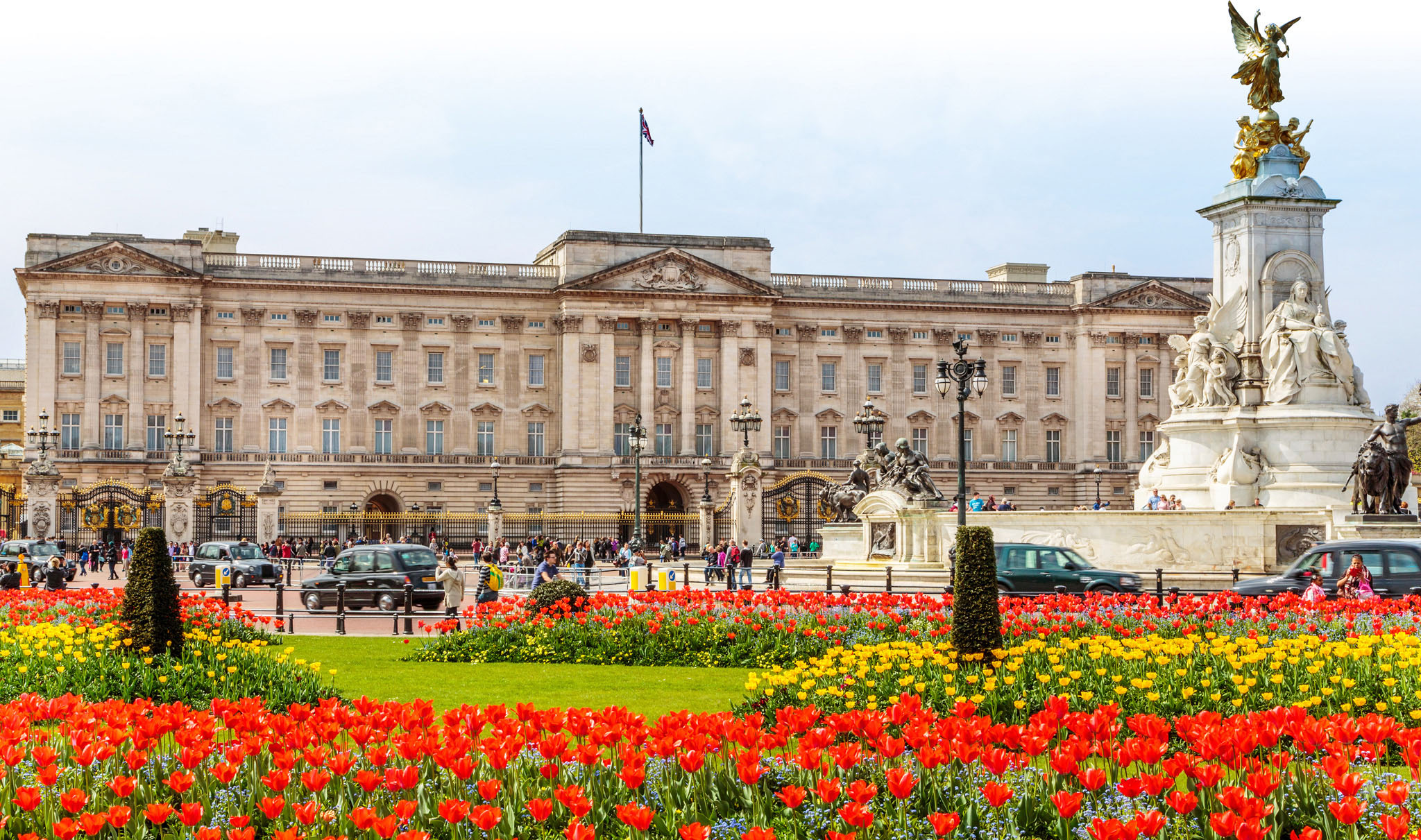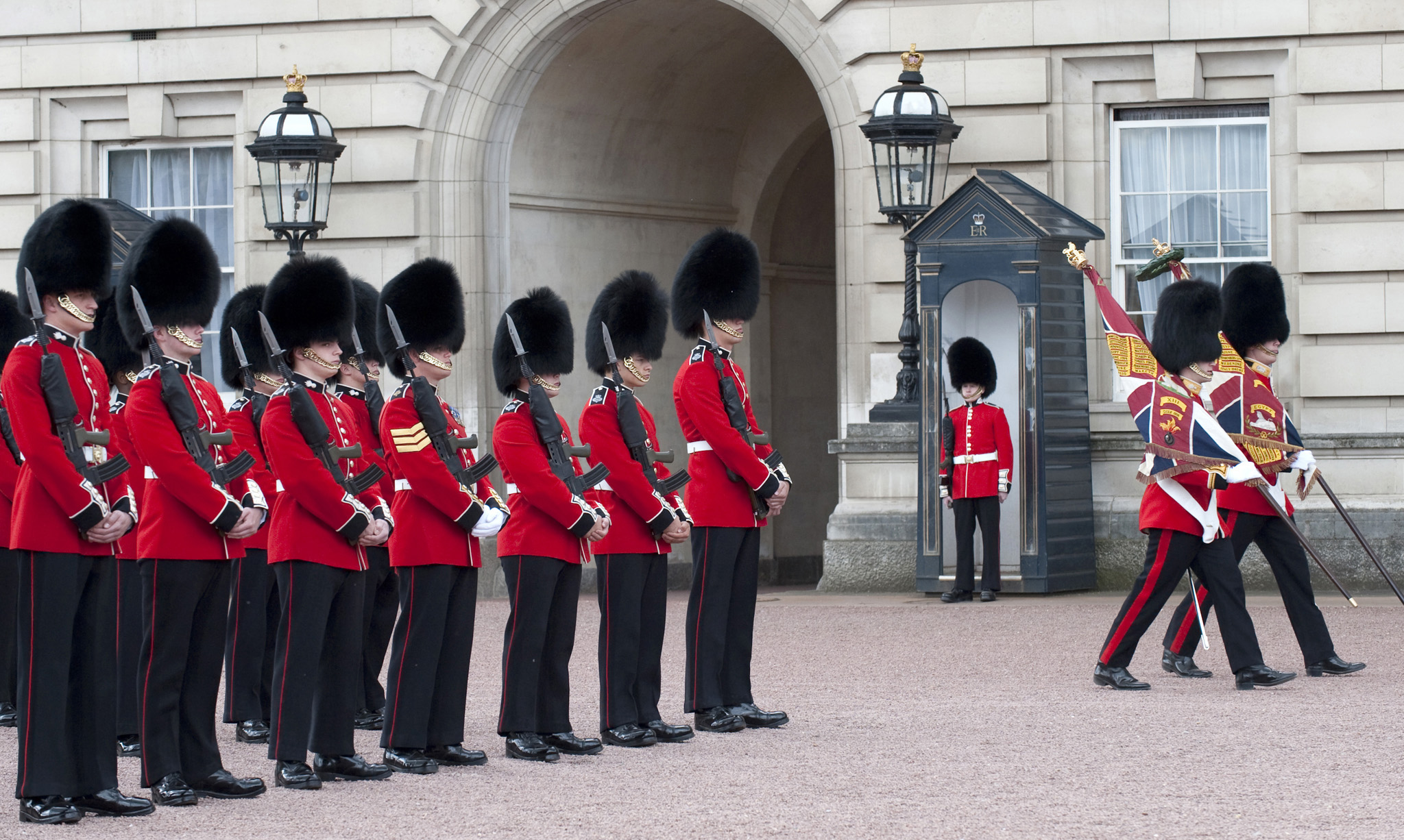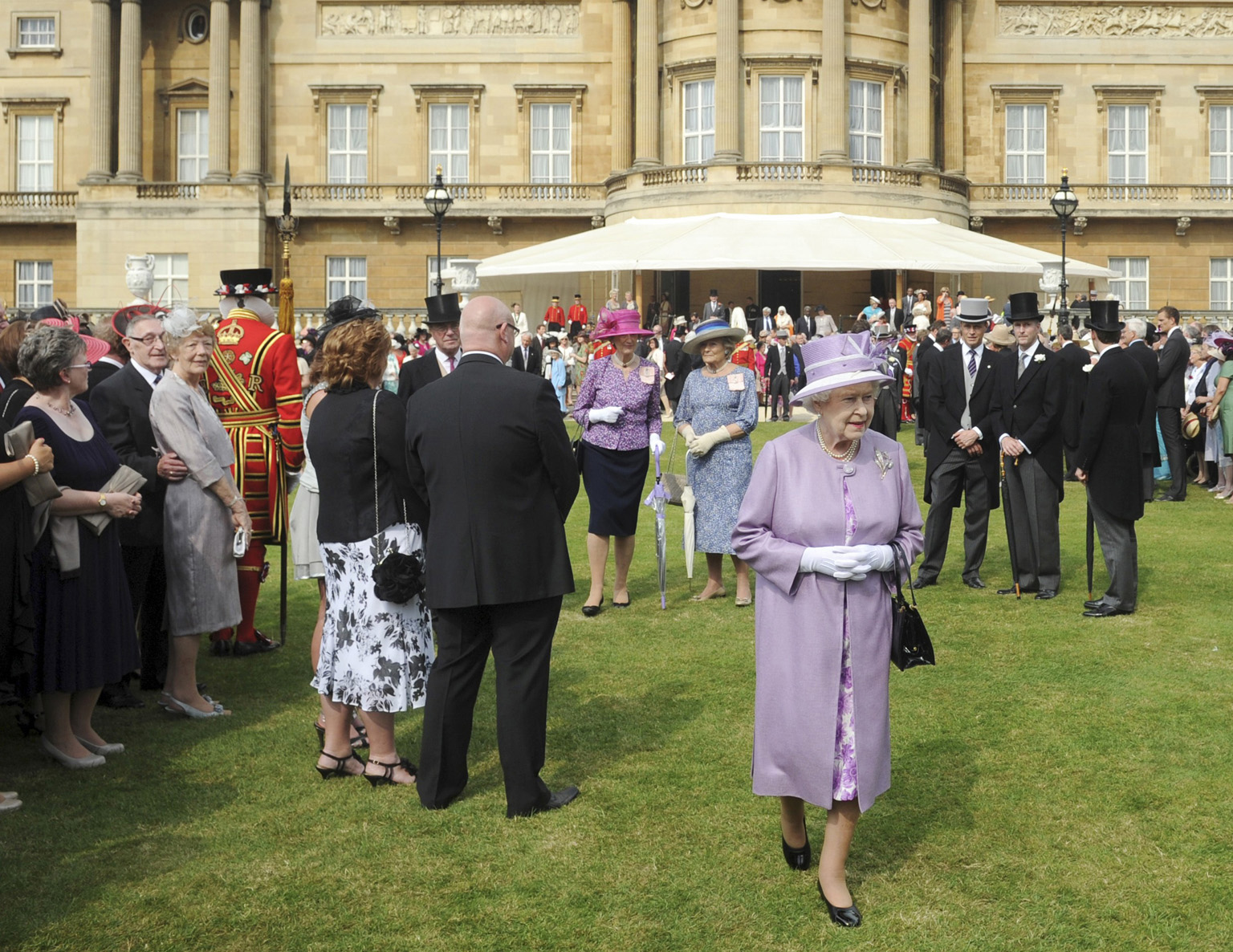
BUCKINGHAM PALACE
London’s most famous residence, and one of its best recognized landmarks, Buckingham Palace was built as a town house for the first Duke of Buckingham around 1705. In 1825, George IV commissioned John Nash to extend the house into a substantial palace. The first resident of the palace was Queen Victoria, from 1837. The extensive front of the building was refaced by Sir Aston Webb in 1914. The palace is now home to Queen Elizabeth II and the State Rooms are open to the public during summer. Many royal parks and gardens in London are also accessible to the public.

Façade of Buckingham Palace
NEED TO KNOW
![]() Buckingham Palace SW1 • 020 7766 7300 • royalcollection.org.uk • Under 5 free. Combined tickets available
Buckingham Palace SW1 • 020 7766 7300 • royalcollection.org.uk • Under 5 free. Combined tickets available
![]() State Rooms: end-Jul–Aug: 9:30am–7pm daily (last adm 5:15pm), Sep: 9:30am–6pm daily (last adm 4:15pm); Adm adults $31, students & over 60 $29, under 17 $18; family $80
State Rooms: end-Jul–Aug: 9:30am–7pm daily (last adm 5:15pm), Sep: 9:30am–6pm daily (last adm 4:15pm); Adm adults $31, students & over 60 $29, under 17 $18; family $80
![]() Royal Mews: Apr–Oct: 10am–5pm daily (last adm 4:15pm), Feb, Mar & Nov: 10am–4pm daily (last adm 3:15pm); Adm adults $14, students and over 60 $13, under 17 $8, family $37
Royal Mews: Apr–Oct: 10am–5pm daily (last adm 4:15pm), Feb, Mar & Nov: 10am–4pm daily (last adm 3:15pm); Adm adults $14, students and over 60 $13, under 17 $8, family $37
![]() Queen’s Gallery: 10am–5:30pm daily (last adm 4:15pm), Aug–Sep: opens 9:30am; Adm adults $16, students and over 60 $14, under 17 $8, family $39
Queen’s Gallery: 10am–5:30pm daily (last adm 4:15pm), Aug–Sep: opens 9:30am; Adm adults $16, students and over 60 $14, under 17 $8, family $39
1. The Balcony
On special occasions, the queen and other members of the Royal Family step onto the palace balcony to wave to the crowds below.
2. Queen’s Gallery
The gallery hosts a changing program of exhibitions of the Royal Collection’s master-pieces, including works by artists such as Jan Vermeer and Leonardo da Vinci.
3. Changing the Guard
The Palace guards, in their red tunics and tall bearskin hats, are changed at 11am daily from May to July (and alternate days from August to April, weather permitting). The guards march to the palace from the Wellington Barracks.

Changing the Guard
4. Grand Staircase
The Ambassadors’ Entrance leads into the Grand Hall. From here the Grand Staircase, with gilded balustrades, rises to the first floor where the State Rooms are found.
5. Throne Room
This houses the thrones of Queen Elizabeth and Prince Philip used for the coronation. Designed by John Nash, the room has an ornamented ceiling and magnificent chandeliers.
6. Picture Gallery
One of the largest rooms in the palace, it has a barrel-vaulted glass ceiling and a number of paintings from the Royal Collection, including works by Rembrandt, Rubens, and Van Dyck.
7. Brougham
Every day a horse-drawn Brougham carriage sets out to collect and deliver royal packages between Buckingham Palace and St. James’s Palace.
8. State Ballroom
Banquets for visiting heads of state are held here. The annual event is the Diplomatic Reception in early December, attended by over 1,500 guests from about 130 countries.

State Ballroom
9. Royal Mews
The finest working stables in Britain care for horses that pull the royal coach on state occasions. The collection of coaches, motorcars, and carriages includes the Gold State Coach, used at every coronation since 1821.
10. Palace Garden
The 39-acre (16-hectare) Palace garden is an oasis for wildlife and includes a 3-acre (1-hectare) lake. It can be visited on tours. There are at least three Royal Garden Parties each year, attended by over 30,000 people.

Palace Garden
PALACE LIFE
The official business of the monarchy takes place in Buckingham Palace, which employs over 800 staff. Several members of the royal family have offices in the palace, but due to ongoing restoration work, these have had to move to temporary premises. The work is due to finish in 2027. The most senior member of the Royal Household is the Lord Chamberlain. The Master of the Household and the Palace’s domestic staff organize many functions every year, including Investitures for recipients of awards which are given by the Queen.
